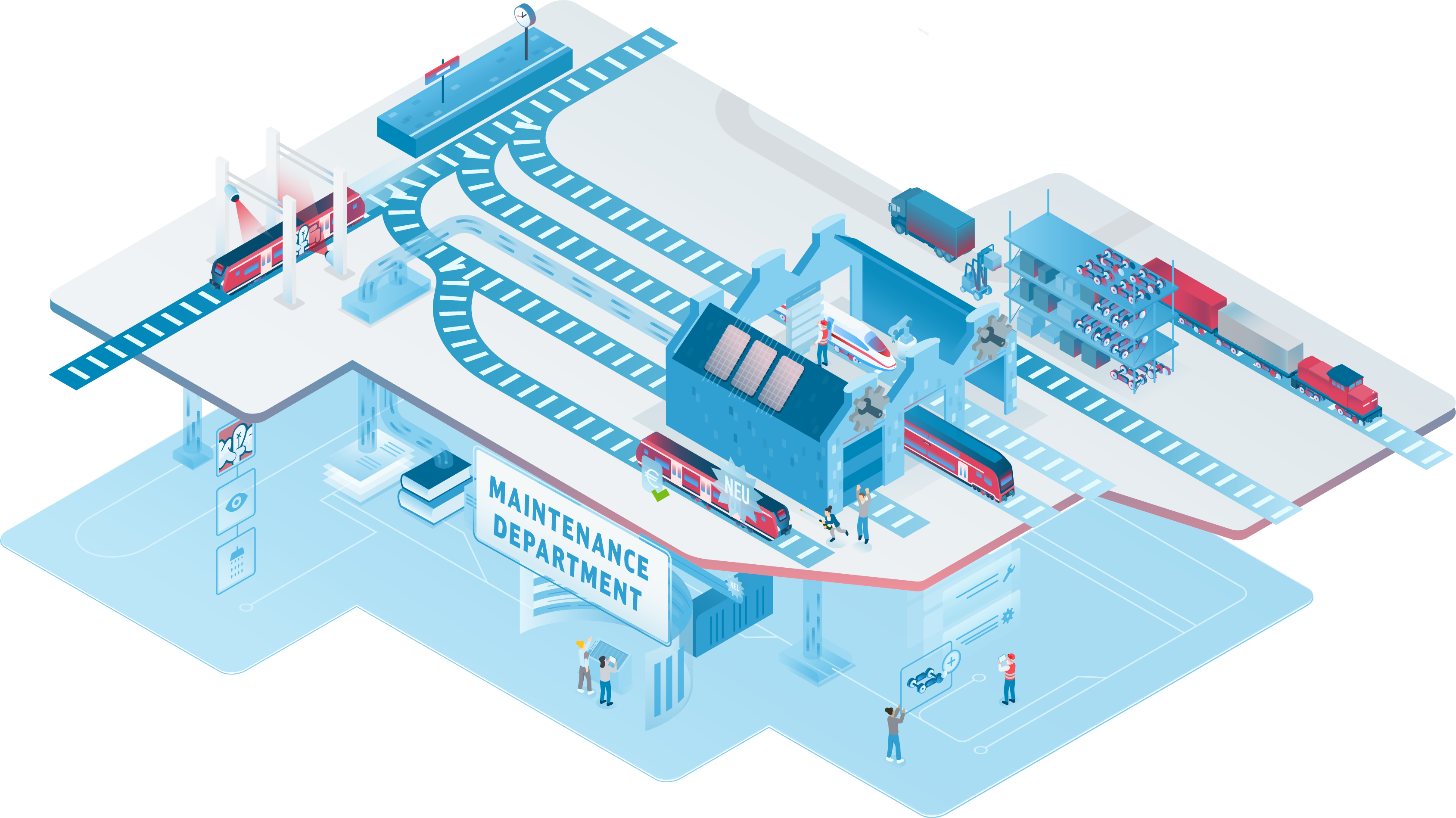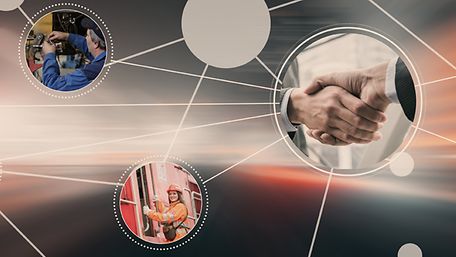Article: Improve utilisation of fleet capacity with modern vehicle maintenance
The Deutsche Bahn fleet is running close to its capacity limit. Increasing maintenance hours limit vehicle availabilty. In order to achieve the goal of twice as many passengers in long distance transport and a 70 per cent higher transport volume in freight traffic, maintenance capacity must also be significantly increased. When it comes to efficient maintenance and clever material supply, a lot of things have to come together – just like with technical innovations for maintenance: we work together on the solutions of the future.
"The maintenance of the vehicles with our strong network is crucial for punctuality and for trains in which customers enjoy travelling."

Our tasks in the overarching cooperation on digital vehicle maintenance
We have made it our mission to optimise these key issues at DB through innovation:
- To advance development in vehicle maintenance across the board and make it more efficient with digitisation. The aim is to reduce costs and increase vehicle availability.
- Improve materials management to prevent bottlenecks with parts and make inventory as transparent as possible
- Overarching planning and control for vehicle maintenance. Among other things, this means setting common goals and planning long-term depot capacities.
Digitalised vehicle maintenance is essential for Strong Rail and the future of the railway. State-of-the-art, high-quality and flexible vehicle maintenance can ensure that wagon fleets can be deployed optimally and seamless passenger and freight transport services guaranteed. Digitalisation of vehicle maintenance along the value chain with our in-depth rail and IT expertise. We develop in-house cross-business unit services or integrate commercially available solutions into Deutsche Bahn's existing standard systems.
More efficient vehicle maintenance through overarching solutions
These are just a few examples of solutions that are already in productive use in vehicle maintenance, minimising downtime and increasing availability:
Steuerung Gleiswechsel (track change control) app
Real-time control of vehicles in delivery to a maintenance depot or in providing trains. With the Steuerung Gleiswechsel (STG) app, train drivers and dispatchers can see at any time where trains are located, whether stable sidings are available or whether shunting movements are possible. The application reduces train drivers' waiting times and delays in providing trains while optimising track change times by 40 per cent.
Intelligent Digital Assistance (IDA)
IDA is intelligent digital assistance (AI) for the analysis of image and video data. IDA uses automated recognition to help you gain new insights into your daily work so you can make informed decisions. That is because IDA understands image and video data, communicates in a user-oriented way, learns every day and informs you when it has recognised a condition. This knowledge raises long-term workflow quality and makes your processes more efficient.
Tracking & monitoring of assets along the production processes
Indoor and outdoor positioning using tracking hardware and software and the visualisation of data in the production process makes it possible to find and track asset locations in real time. For example, production controllers can find equipment, tools, load carriers and vehicles more quickly and thus react to the production situation.
Digitally monitor the infrastructure of plants
The plant monitoring service from Operational Technology Analytics (OT Analytics) offers the option of monitoring machine technology systems digitally and in real time at any time, even when retrofitting. This means that systems in the plant environment, such as underfloor wheel set lathes, lifting jack systems or high-pressure water jetting systems and their running and imminent downtimes, can be kept in view.
Digital fleet management
The Digital fleet control project uses software and hardware to optimise the planning and commissioning of maintenance services. It synchronises the capacity of the plants with the scheduled and corrective maintenance requirements. This optimises the utilisation of our maintenance plants by using capacities as efficiently as possible.
Do you have any questions about the interconnection process, our projects or a specific requirement?
We look forward to discussing the future of maintenance with you.


